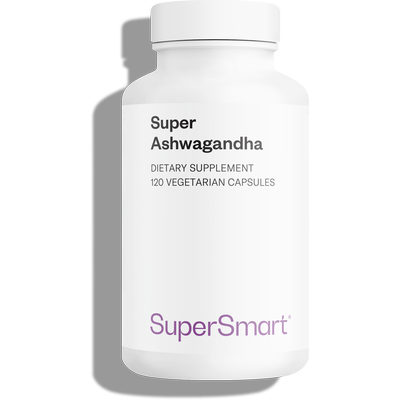29-03-2017
Scientists discover a new active compound for treating insomnia
 Do you find it difficult to get to sleep? Do you often wake up in the middle of the night? And then have trouble falling back asleep? If, like millions of others, you’re looking for a natural and effective solution to your sleep problems, you’ve come to the right place. A team of scientists have just identified a new active compound that tackles insomnia naturally. What’s more, this compound comes from a plant that has been used for thousands of years in Ayurvedic medicine. Here we review this effective new molecule which could seriously improve life for those with sleep problems.
Do you find it difficult to get to sleep? Do you often wake up in the middle of the night? And then have trouble falling back asleep? If, like millions of others, you’re looking for a natural and effective solution to your sleep problems, you’ve come to the right place. A team of scientists have just identified a new active compound that tackles insomnia naturally. What’s more, this compound comes from a plant that has been used for thousands of years in Ayurvedic medicine. Here we review this effective new molecule which could seriously improve life for those with sleep problems.
Ashwagandha, a natural alternative for treating insomnia
Problems falling asleep, waking up repeatedly, feeling stressed on waking … these are all typical symptoms of insomnia. Whether temporary (acute) or persistent (chronic), insomnia can significantly impair daily life, causing increased irritability, daytime sleepiness and difficulty concentrating. While medications are available, taking sleeping pills is often discouraged due to potential issues with dependency and unwelcome side-effects. This is why many researchers are working to find natural alternatives. The plant Ashwagandha is one of the most significant avenues being explored in this context. It has been attracting scientific interest for several years because of its important place in Ayurvedic medicine as an aid to sleep and treatment for insomnia. It has, however, taken until 2017 to identify the compound responsible for its soporific effects and gain a better understanding of its benefits for insomniacs.
Explaining Ashwagandha’s soporific effect
Although Ashwagandha (Withania somnifera) has been used to treat sleep problems for thousands of years, until now there had been no scientific explanation for its soporific effect. However, at the beginning of 2017, a study was published in the journal PLOS ONE1. A team of Japanese scientists had succeeded in identifying a new compound inAshwagandha called triethylene glycol. Their study on mice showed that this compound produces a significant increase in non-REM sleep, the deep, slow-wave phase of sleep. While additional research is needed to confirm these results, this Japanese study has opened up promising new possibilities for tackling insomnia and other sleep problems.
This new discovery provides further confirmation of the benefits of Ashwagandha. Even before the study on insomnia, it had already demonstrated positive effects against stress and anxiety, hence its classification as an adaptogen – a substance that enables the body to adapt to the various external stresses of daily life. Indeed, we had devoted an article to the subject: «Adaptogens and stress». Suffice to say that Ashwagandha represents one of phytotherapy’s most precious assets. It is now available in dietary supplement form, such as the new extract offered in the Supersmart catalogue: Super Ashwagandha.
> Source :
1. Kaushik MK, Kaul SC, Wadhwa R, Yanagisawa M, Urade Y, Triethylene glycol, an active component of Ashwagandha (Withania somnifera) leaves, is responsible for sleep induction, PLoS One, 2017 Feb 16, 12(2):e0172508.
Order the nutrient mentioned in this article

An organic Withania somnifera extract for mental health and relaxation
www.supersmart.comFurther reading
02-02-2015
L-tryptophan is one of eight essential amino acids in the human diet. It is the metabolic precursor of serotonin, melatonin and niacin. It was discovered...
Read more12-11-2013
The European Union has finally authorised a natural sleep aid: melatonin. If you ask me, those responsible for banning this natural substance for so many...
Read more25-01-2019
You’re probably one of the many people who have experienced the horrors of insomnia : the stifling duvet, the clammy skin, the tossing and turning...
Read more© 1997-2025 Fondation pour le Libre Choix
All rights reserved
All rights reserved
Free
Thank you for visiting our site. Before you go
REGISTER WITHClub SuperSmart
And take advantage
of exclusive benefits:
of exclusive benefits:
- Free: our weekly science-based newsletter "Nutranews"
- Special offers for club members only

















